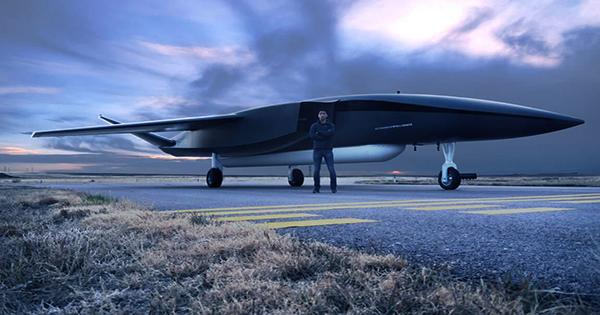The world’s largest unmanned aerial vehicle (UAS) with mass has been unveiled by a private rocket-launch startup aimed at launching rockets loaded into satellites into low-Earth orbit in the atmosphere. Weighing in at about 26 tons, the jet-powered aircraft, the Ravn X, is designed to be able to launch a satellite into space every 180 minutes, and the Alabama-based company has won $1 billion in official contracts for Aevum.
Jay Skylus, founder and CEO of AVIM, said in a statement, “Aevum is completely restructuring access to space. The current definition of rocket science does not work for us.” “Through our autonomous technology, Aevum will shorten the lead time of the launch by several months from year to year, and when our customers demand it, a few minutes.”
The Ravn X will be removed; the rocket-powered payload will land on the runway once it reaches the specified drop zone, and will return to the hangar in full autonomy. The launch requires a great huge aircraft to carry more than even small pads in the atmosphere. The Ravn X holds a (0 ft (18.3 m)) wing, is 18 feet (5.5 m) long and requires the same fuel as a standard jet. As an added bonus, the aircraft is 70 percent reusable which, Aevum claims will be improved at 95 percent reusable in the future.
After its Dec. 3 debut, it won’t take long for Ravn X to take to the air to deliver its first payload. Carrying the first formal small launch mission ASLON-45 contracted by the U.S. space force, the Raven X will complete the first delivery in Q3 in 2021.
Ravn X forms part of Aevum’s new program for satellite launches, which they call an autonomous launch. Involved in multiple intelligent and self-managing systems, from calculating weather conditions to uncrewed piloting of delivery vehicles, autonomous launches deliver payloads for space with minimal human decision-making and can be observed at a faster rate than existing systems. Moreover, not using human pilots will completely eliminate the risk of life associated with entering orbit.
There are already many similar delivery systems out there, according to Phil Smith, the senior analyst at Bryce Space and Technology. However, some experts have commented that Ravn X is already entering the saturated market of aviation supplier vehicles. “Probably not three to five or more places.” “There’s an abundance of systems out there,” he told Science magazine.
Most of the vehicles of this supplier are currently man-powered, in contrast to Aevum’s autonomous system; it may or may not be enough to stand out from the competition. Nevertheless, powerful unmanned aerial vehicles like this represent an impressive leap forward for aeronautical and space technology, and the future of placing them in fast-paying orbits is much closer than ever before.















